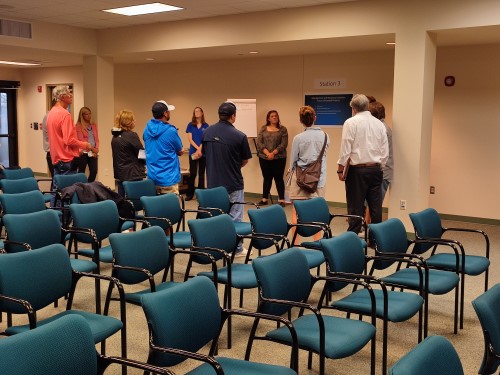The wheels were turning at the MDMR this week as local leaders, scientists, harvesters, and business leaders met to discuss oyster management and recovery efforts in our state.
The Mississippi coast has historically been a productive source of the bellowed salty wonders, the American oyster. Over the past decade, our oyster habitats have suffered several natural and man-made disasters resulting in a sharp decline in the oyster population across the Mississippi sound.
This decline threatens to destroy the heritage and culture of oyster harvesting long established on the coast. According to the MDMR, without intervention, our oyster resource could disappear from Mississippi coastal waters.
Since 2015, the state has been ramping up efforts to ensure this way of life for so many remains an integral part of our culture. During that year, Governor Bryant created the Oyster Council to analyze environmental and economic factors affecting the resource. The council created a detailed report outlining recommendations for recovery and resiliency. These recommendations all link to a goal of increasing oyster harvest and creating new jobs and business opportunities while improving the environment through species recovery, habitat creation, and improved water quality.
With that goal in mind, the MDMR has been hard at work creating a strategic plan containing projects to positively impact our oyster population. During Tuesday’s public meeting, they invited key stakeholders in the oyster resource to come and share their ideas and concerns related to the plans, as well as add some potential future projects. Executive Director of the MDMR, Joe Spraggins stated that gaining the wisdom and insight of these key stakeholders is crucial to the recovery efforts as they are the ones that have the necessary knowledge to make a long-lasting impact.
During the meeting, attendees discussed the three main components of the plan: active projects, future funded projects, and future unfunded projects. Participants were divided into three groups and rotated around the room to provide feedback to MDMR staff and ask any questions related to each. Projects ranged from cultch planting, remote setting oyster larvae, expanding aquaculture, addressing water quality issues, and many more.

Tuesday’s meeting will not be the last opportunity to discuss the plans as to MDMR staff is asking for continual feedback on these three components and want the stakeholders to know this plan is fluid. If projects are not working like originally expected adjustments can be made. MDMR staff wants to continue to foster relationships for this recovery effort with key stakeholders in the industry as well as academia. Megan Gima of The Thad Cochran Marine Aquaculture Center attended the meeting for just this reason. She was looking to gain a clearer understanding on how they could be of any assistance to the agency in their efforts.
Through these collaborations and the hard work of the staff at the MDMR, the future is looking up for our oyster population. If you have any comments or concerns on the Oyster Management and Recovery Strategic Plan strategic plan the MDMR is still taking comments at oyster@dmr.ms.gov